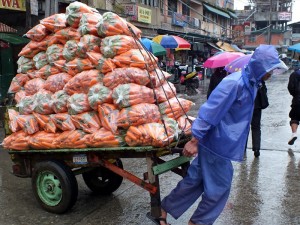
Vegetable farmers from the Cordillera, Benguet, and Quezon have attracted the interests of Singaporean buyers who want to import highland vegetables from the Philippines, Agriculture Secretary Proceso Alcala said.
A three-man Singaporean team recently visited the provinces of Quezon and Benguet to see for themselves the various vegetables that their fellow Singaporeans prefer.
According to the Department of Agriculture, the team was interested in high value vegetable crops from these regions, which are usually used as ingredients for chop suey, a popular stir-fried dish.
Alcala said the group wanted to buy semi-temperate Chinese-type vegetables that are widely grown in Quezon and Benguet. These include bell pepper, tomatoes, cabbage, pechay, several types of lettuce, and coriander.
They were also interested to import fresh banana leaves as plate liner.
“Their visit is a signal that Filipino farmers are now ready to export their quality, organically grown vegetables to Singapore, Japan and other neighboring countries,” Alcala said in a statement Sunday.
While in Benguet, the Singaporeans visited the farm of Francis Ching in Mankayan, which is planted to bell pepper, cabbage, romain lettuce, iceberg lettuce and coriander.
The group also placed an initial order of lettuce, kamote (sweet potato) and onion.
Ching’s crops are of export quality, the DA said. The agri-businessman was the 2010-2011 regional winner of Gawad Saka under the high value crops category.
But no amount of imports has been committed yet by the Singaporeans.
In their next visit to the Philippines, the Singaporean businessmen will also look into possibility of buying vegetables from Mindanao, the DA said.
According to Alcala, the DA on behalf of qualified farmers’ groups is prepared to enter into a growing contract arrangement with the Singaporeans and other interested foreign and Filipino businessmen.
“We should have a timeline and we must consider such factors as production cost, logistics and freight requirements. The bottomline is still the cost and farmers’ income,” he said.

